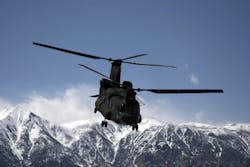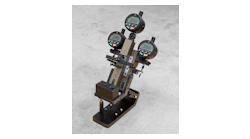Increase Thermal Stability and Prevent Engine Coking with Fuel Additive
Facing governmental cost reductions, as well as the need of private entities to create more efficiencies, the aircraft and aviation industry is navigating through cost saving options that allow their aircraft to fly more efficiently and, more importantly, to fly safer. Currently, engine manufacturers such as GE, Rolls-Royce, and Honeywell to name a few, are working to meet operating cost pressures that prolong engine-on-wing time, and reduce maintenance time and expenses.
Though at a critical time in today’s economy, the need to reduce costs and improve safety are nothing new to the aviation industry. More than three decades ago, the U.S. Armed Forces had the foresight to look at one area of the aircraft they knew could be a hidden gem for their cost-saving and safety imperatives – the jet engine.
Deposits can lead to inefficient turbine engine performance
Jet fuel contains instability precursors that can form color bodies and sediment when the fuel is stressed at high temperatures in fuel systems. Trace amounts of transition metals, like copper and iron, catalyze the sediment forming reactions. Sediments in the form of coking deposits can build up on fuel system components, especially hot fuel nozzles. These deposits can lead to inefficient and erratic engine performance, and ultimately costly and unsafe engine shutdown.
In the late 1980s, the United States Air Force (USAF) took measures to truly understand how to improve this function, especially in preparation for new propulsion engines that would run at even a higher-heat load and face a substantial increase in the bulk fuel temperature prior to the point of combustion. In a joint program, the USAF, along with the United States Navy (USN) and industry partners, began investigating alternative fuel solutions. It was imperative they find a way to prevent fuel system coking, especially on the fuel nozzle face, which was a concern with the use of standard jet fuels. The initial required performance goal was 100 F of thermal stability above the then current standard jet fuels.
After several years of research, testing, and trials, it became clear that the most cost-effective solution to combat this issue was through additive technology. Using GE’s fuel additive, which was the only one that was able to meet performance goals during these trials, the joint program realized that engines began to run quieter, exhaust flames burned cleaner, and the linings in the afterburner sections became whiter. In short, the engines began to show indications of clean up. In some testing, results were dramatic, with maintenance cost reduced by more than 70 percent. In the end, this fuel additive not only met the high temperature, thermal stability requirement for aircraft, it also provided tangible clean up benefits to the aircraft fleet.
The additive solution
The final-developed GE additive contains an antioxidant to help prevent sediment formation, a metal deactivator to minimize the impact of trace metals, and a revolutionary high temperature dispersant/detergent to prevent deposits from forming on hot fuel system components and to clean up deposits already formed in dirty fuel systems.
In dirty systems, the additive first inhibits reactions that cause carbon and coke buildup as the fuel is thermally stressed. Next, the detergent in the additive begins binding to existing carbon-on-metal surfaces. In the highly turbulent environments of a turbine engine, a cleaning action is created as the additive flows through the system. By minimizing the carbon from forming in the first place, and by reducing the amount of carbon deposition on metal surfaces, engines can operate more efficiently, leading to better operational performance – all of which create a positive return on investment.
As a direct result of this investigation and findings, the U.S. Army has been using this additive for more than 15 years for its helicopter fleet at Fort Rucker, Alabama, which is home to the U.S. Army Aviation Center of Excellence. At this facility alone, operating and support costs were dramatically reduced by more than $5 million per year on maintenance, with a total projected cost savings of $69 million over a 10-year period. In fact, the project has been so successful at Fort Rucker, the team recommended this specific additive be used in all U.S. Army aircraft going forward.
All turbine-powered equipment, including M1 Abrams main battle tanks and aircraft in the commercial sector, can benefit from fuel additives as a way to increase thermal stability and prevent engine coking. For safety of flight considerations, liquid fuel additives must go into solution quickly, be FAA approved where needed, and be approved for use in engines manufactured by the major manufacturers of today, including GE, Pratt & Whitney, Rolls-Royce, Turbomeca, and Honeywell.
Aircraft are a necessity in the world we live in and being able to run them in ways that meet cost and safety parameters will continue to be a major goal for the aviation industry. By partnering with engine and aircraft manufacturers, aviation specialists can benefit from adding additive requirements and maintenance guidelines to engine manuals.
Don Rhule is the Global Business Development Leader for GE Water & Process Technologies, and has been with the company for more than 33 years. During this time, Don has held a number of leadership roles within the sales, marketing, and research functions for fuel and hydrocarbon additives. Don spent time at the U.S. Naval Flight School, before pursuing a degree in Biology and Chemistry from Edinboro State University. Visit http://bit.ly/GEhelicopter for more info. To determine the potential savings from using GE’s fuel additive, visit www.gewater.com/savings-calculator.



